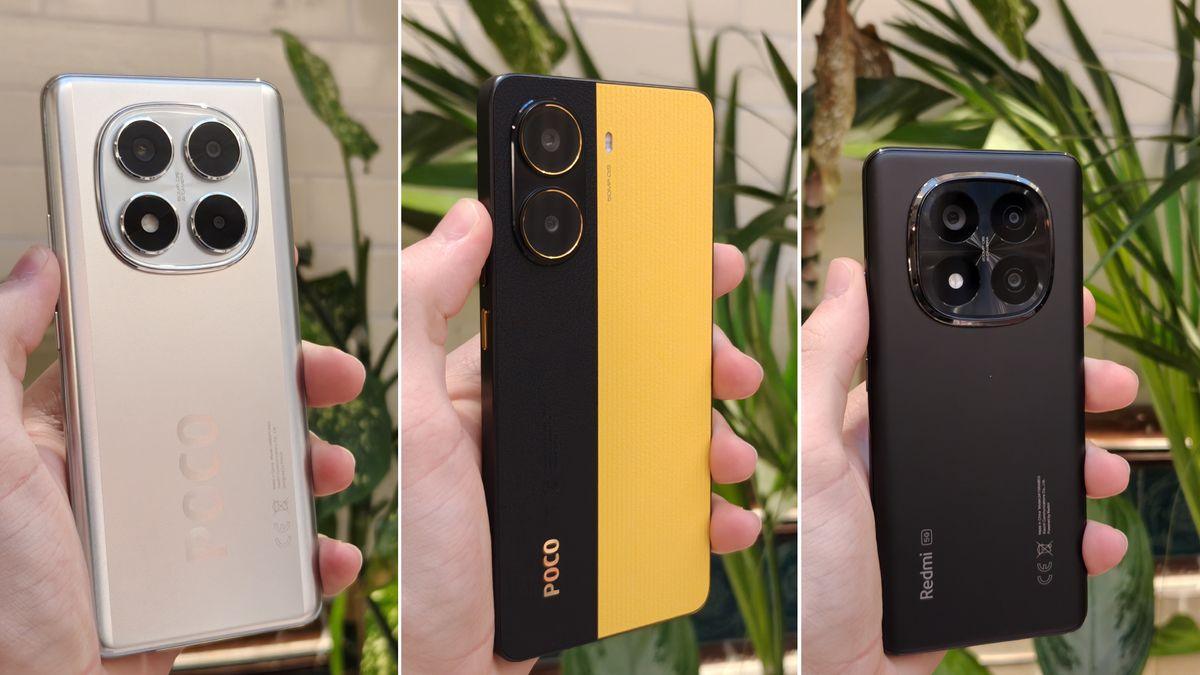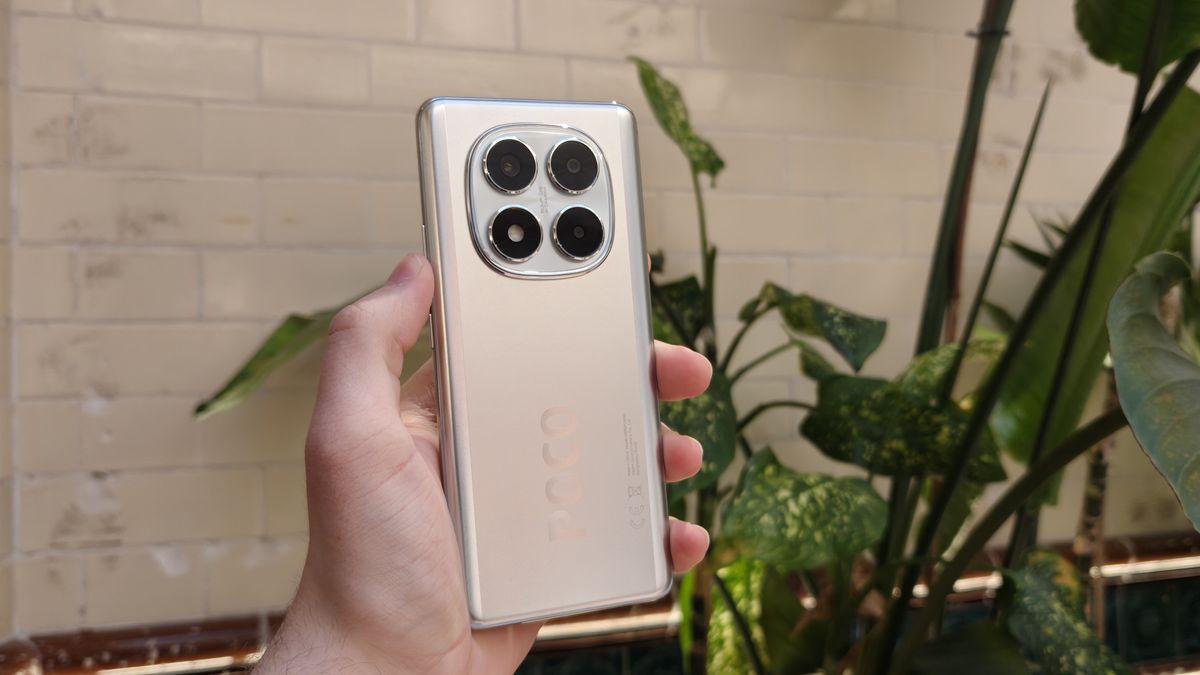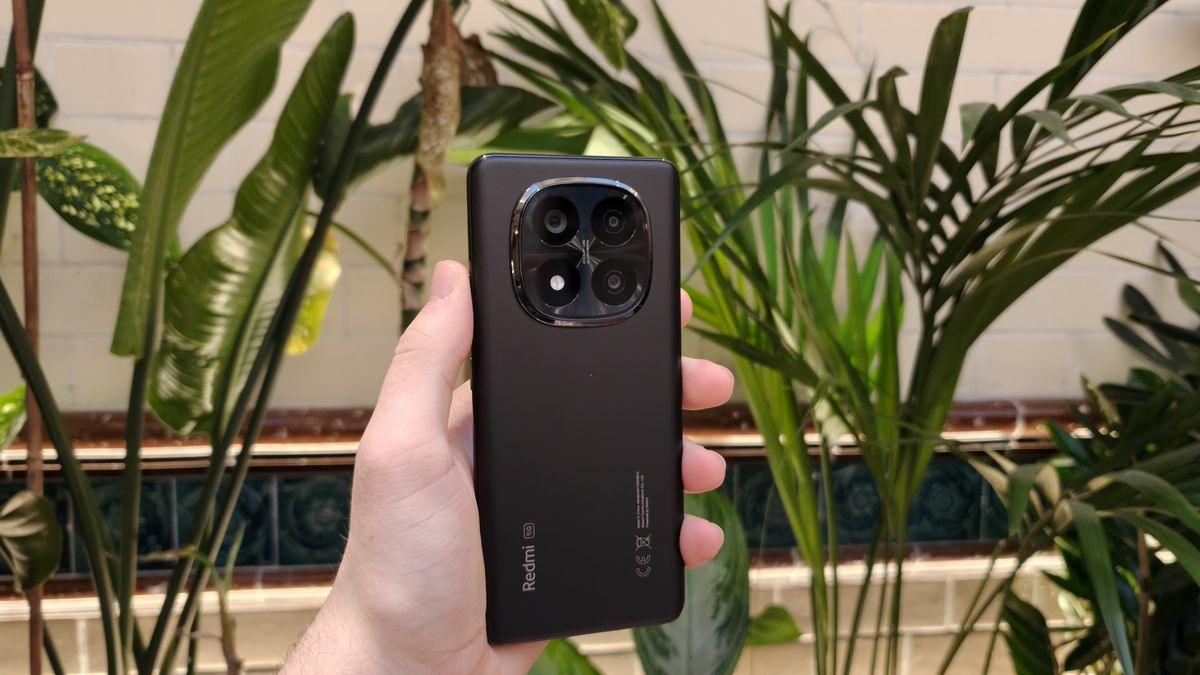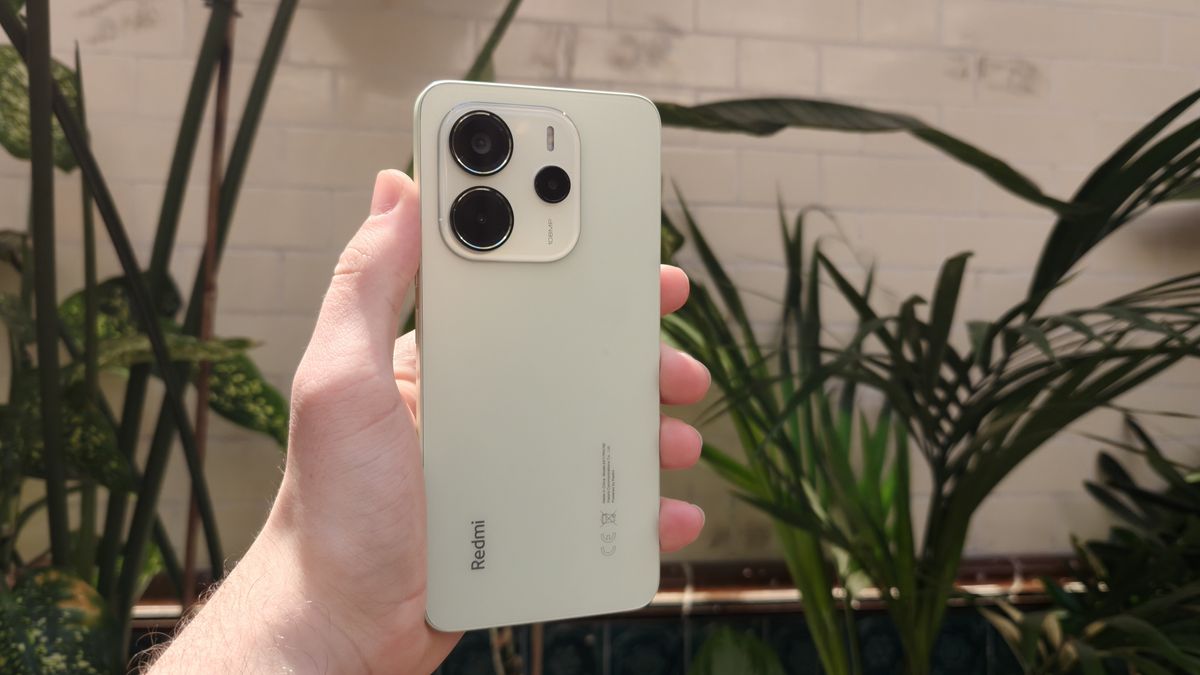- Xiaomi has refreshed the ranges of its Poco and Redmi brands
- Poco X7 and Redmi Note 14 Pro families focus on offering specific flagship features at low prices
- A Xiaomi spokesperson described this strategy as a “democratization” of flagship features.
Xiaomi has unveiled a range of new budget and mid-range smartphones under its Poco and Redmi sub-brands, with a total of six new models coming to the UK market in the coming weeks.
The Poco X7 and Poco X7 Pro are the most powerful of the group; both have been designed with gaming and sustained performance in mind, and feature sporty black and yellow color options, with the Poco X7 Pro featuring a soft-touch PU leather back panel.
The Poco The Poco X7 Pro upgrades to the MediaTek Dimensity 8300 chipset and loses the macro camera. Both phones have a 20 MP selfie camera.
Both new Poco phones also feature a 6.67-inch 1.5K display, with the X7 using a curved design and the X7 Pro featuring a flatter profile closer to modern flagships. As for the battery, the X7 has a 5,110mAh cell with 45W wired charging, while the X7 Pro uses a 6,000mAh split battery with up to 90W fast wired charging.
The Poco X7 starts at £249 for 8GB of RAM and 256GB of storage, with the X7 Pro starting at £309 for the same configuration.
Xiaomi’s other new budget phone lineup is the Redmi Note 14 series, comprising five models. The Note 14 is available in a single 4G compatible version; the Note 14 Pro is available in a less efficient 5G and 4G variant; and the higher-end Note 14 Pro Plus comes in a single 5G-enabled version.
The Note 14 Pro Plus is the most technically efficient of the new Redmi models, featuring a Snapdragon 7s Gen 3 chipset, a 6.67-inch 120Hz 1.5k curved screen and a 5,110 mAh battery supporting an impressive 120W wired charging speed. The phone is also equipped with a 200 MP main camera with optical image stabilization that allows up to 4x zoom via sensor crop and up to 30x digital zoom.
The Note 14 Pro 5G and its less powerful 4G version both sport the same 200MP camera. The 5G version is equipped with the MediaTek Dimensity 7300 chipset, while the 4G version is equipped with the MediaTek Helio G100-Ultra chipset. Both phones come with a 6.67-inch 1.5K curved display.
As for the base Note 14 model, the phone sports a MediaTek Helio G99 chipset, a 108MP camera and a 6.67-inch 120Hz FHD+ AMOLED flat screen.
The Redmi Note 14 Pro Plus starts at £399, the Redmi Note 14 Pro 5G at £299 and the Redmi Note 14 Pro 4G at £249; they all start with 8GB of RAM and 256GB of storage. The base Redmi Note 14 model starts at £179 for 6GB of RAM and 256GB of storage.
Personally, I can see parallels between Xiaomi’s strategy and that of Samsung’s A-series budget phones, which are some of the best cheap phones on the market. Like Samsung, Xiaomi’s updated device lineup features progressively increased performance to meet a wide range of needs and budgets.
Xiaomi’s lack of presence in the US and relative lack of influence in the UK will hamper any chances it has. Really take the fight to Samsung, but the inclusion of high-resolution cameras and huge batteries with fast charging at these low prices should make the South Korean giant look over its shoulder.
Democratize flagship features
At an official pre-launch event, a Xiaomi spokesperson explained to TechRadar the method used to bring flagship features, such as 6,000 mAh batteries and 50 MP wide-aperture cameras, to the models. economics of the company.
“What we’re looking for when we talk about democratizing features is to ensure that we’re still delivering a great experience to our valued customers and to customers who may not be able to afford our premium flagship devices” , explained the spokesperson.
They added: “For example, wireless charging is not something we have in Redmi devices. We have this in our Xiaomi devices – but we still offer 120W Hypercharging on the Redmi Note 14 Pro Plus.
“This will be about the pricing structure of the device,” the spokesperson added. “We look at the device and what the price is, and what we can do within that price for consumers. […] The other point is user feedback. We look at social media, we have our own Xiaomi fans that we talk to directly – that helps us orient ourselves, and it’s something we’ve been doing since the beginning of Xiaomi.
If these new budget phones turn out to be capable handsets, we could be looking at new additions to our list of best Xiaomi phones. For the latest updates, be sure to check out our dedicated Xiaomi phone coverage.








